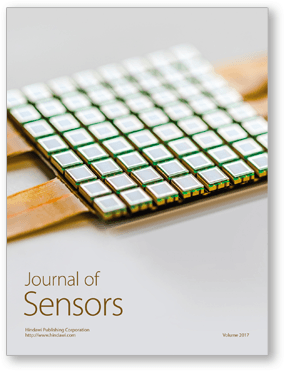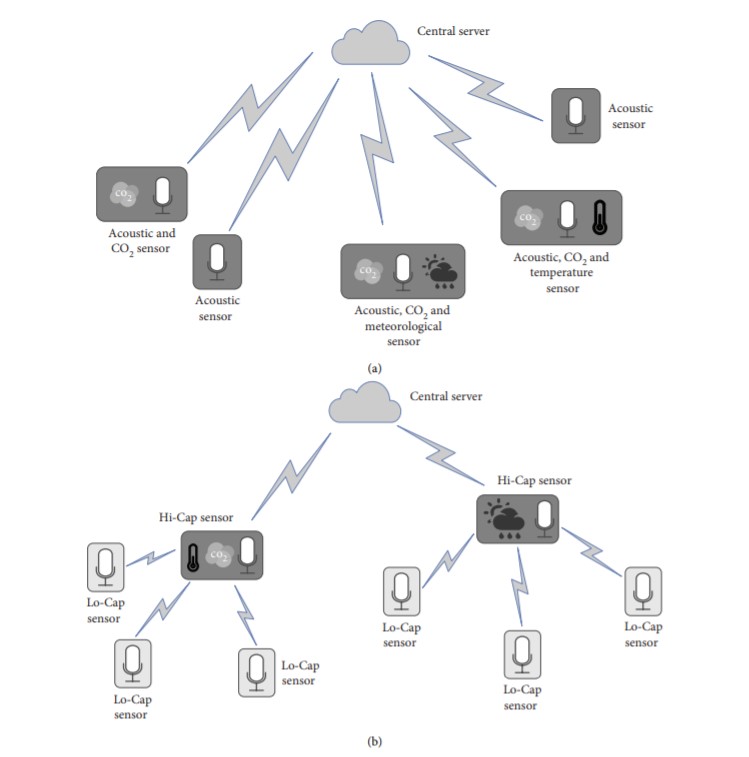Review of Wireless Acoustic Sensor Networks for Environmental Noise Monitoring in Smart Cities

Nowadays, more than half of the world’s population lives in urban areas. Since this proportion is expected to keep rising, the sustainable development of cities is of paramount importance to guarantee the quality of life of their inhabitants. Environmental noise is one of the main concerns that has to be addressed, due to its negative impact on the health of people.
Different national and international noise directives and legislations have been defined during the past decades, which local authorities must comply with involving noise mapping, action plans, policing, and public awareness, among others. To this aim, a recent change in the paradigm for environmental noise monitoring has been driven by the rise of Internet of Things (IoT) technology within smart cities through the design and development of Wireless Acoustic Sensor Networks (WASNs), as the ones designed and deployed in the two pilot areas of the LIFE DYNAMAP project.
The work published in the Journal of Sensors (Hindawi) reviews the most relevant WASN-based approaches developed to date focused on environmental noise monitoring. The proposals have moved from networks composed of high-accuracy commercial devices to the those integrated by ad hoc low-cost acoustic sensors, sometimes designed as hybrid networks with low and high computational capacity nodes. After describing the main characteristics of recent WASN-based projects, the paper also discusses several open challenges, such as the development of acoustic signal processing techniques to identify noise events, to allow the reliable and pervasive deployment of WASNs in urban areas together with some potential future applications.

Figure Diagrams of different network typologies. (a) considers a homogeneous network (for any kind of acoustic sensor), and (b) considers a hybrid network, mixing high-capacity (Hi-Cap) and low-capacity (Lo-Cap) nodes. Both networks send the processed data to the central server in the cloud. The Hi-Cap node can implement some kind of signal processing routine.
The main conclusions obtained from the review of the state of the art about WASNs developed to monitor environmental noise in the context of smart cities are the following. As traditional static noise mapping has been conducted by means of expert-based sound level measurements, the initial WASN-based approaches opted to build the network using commercial devices. The measured equivalent noise levels, typically computed as the A-weighted equivalent noise levels (LAeq), were collected and sent to a central server automatically, thus substituting the participation of technicians in the measurements. Although these WASNs provided high-accuracy results, the cost of their nodes made them very expensive for large-scale installations. Later, several projects included the design of ad hoc acoustic sensors, with most of them focused on the development of low-cost sensors to allow the pervasive deployment of the noise monitoring network. Within this group of networks, we can find both low- and high-capacity nodes (sometimes mixed in hybrid networks), dynamically providing LAeq values, while some seminal WASN-based projects are also starting to include some acoustic event detection techniques to obtain extra information from the measurements.
In this context, it is worth mentioning that low-cost high-capacity sensors have started being used to monitor specific noise sources in urban environments (e.g., road traffic noise or specific events for surveillance) to address the requirements of European Noise Directive and CNOSSOS-EU legislation. Moreover, this opens up the possibility that these sensors could be specifically designed to monitor leisure and recreational areas or critical places such as hospitals and schools, among others. Finally, since noise pollution is one of the principal sources of health problems along with air pollution according to WHO, WASNs are envisioned to become a key IoT-based technology to address this problem in smart cities. In the near future, reliable and ubiquitous WASNs will be able to provide valuable information to control and mitigate environmental noise far beyond current studies, mainly based on static noise maps developed every five years. Nevertheless, further research should be conducted to improve the performance of WASNs in real-life operation conditions, especially if the data obtained from these networks will be used by the competent authorities to develop action plans, impose administrative penalties, etc. Therefore, it is worth noting that although WASNs are becoming an incipient reality, very few projects have been deployed in some smart cities around the world (most of them as pilots); thus, the complete exploitation of this technology still has a long way to go.
Article
Francesc Alías, Rosa Ma. Alsina-Pagès (2019), "Review of Wireless Acoustic Sensor Networks for Environmental Noise Monitoring in Smart Cities", Journal of Sensors, Volume 2019, Article ID 7634860, 13 pages, May [Link].

Acknowledgements
The research presented in this work has been partially supported by the LIFE DYNAMAP project (LIFE13 ENV/IT/001254). Francesc Alías acknowledges the support from the Obra Social “La Caixa” under grant ref. 2018-URL-IR1rQ-021.